The story of the East-West feud is as much the story of hip hop as it is the story of media sensationalism. The rivalry between the East and West coast had been blown out of proportion by the media outlets of the time such as Vibe magazine, causing its events to be fueled by inflammatory headlines and popularity. In interviews for the history of gangster rap, Method Man of Wu-Tang Clan noted to author Soren Baker “when B.I.G. took that picture [for the 3rd anniversary issue of Vibe], he didn’t take that picture thinking ‘East vs. West.’ He took a picture thinking ‘I’m going to be on the cover of Vibe.’ What came after is what solidified [the] East-West beef for all the dumb motherfuckers around that don’t know how to think for themselves.” Noting that even Tupac said “’You guys injected yourselves into a beef that was just between me and Bad Boy [Entertainment].’ Had nothing to do with nobody else. He said it himself.”
With the death of Tupac, the East and West coast scenes attempted to make amends and put an end to the fighting. A peace summit was held at Mosque Maryam in Chicago in September 1996, and Snoop Dogg and Sean Combs would meet the following February to call for the feud to end. With the shooting and death of Biggie a month later, the whole American hip hop scene was left in mourning. Weiner, an employee for West Coast label Priority Records told Baker “People on the West Coast weren’t happy when Biggie got killed, and people on the East coast weren’t happy when ‘Pac got killed… I never heard anyone celebrating those losses, which at the end of the day, to me, really let you know what was going on with the community… when it came to the real shit happening, everyone stood up together and felt that loss. It made people realize that they went too far.” There can still be a regional rivalry felt between the two coasts today, but the intensity of the 90’s feud died with Biggie and ‘Pac.
 Know What I Mean?
by
Know What I Mean?
by
Covers popular music of all genres and periods from 1900 to the present day, including jazz, country, folk, rap, reggae, techno, musicals, and world music.
Searches hundreds of popular magazines. Includes full-text and full color images.
An audio and video collection for classical, opera, jazz, world, popular music, and American music. Also includes theatre, dance, and film resources.



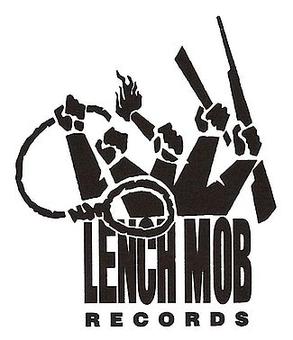

N.W.A, American hip-hop group from Compton, California, whose popular, controversial music included explicit references to gang life, drugs, sex, and distaste for authority, especially the police. Its five core members were Eazy-E, Dr. Dre, Ice Cube, MC Ren, and DJ Yella. Later members included Arabian Prince and The D.O.C. The group is widely credited with popularizing the gangsta rap genre of hip-hop music and increasing the prominence of the West Coast hip-hop scene. (1)
 N.W.A : Straight Outta Compton
N.W.A : Straight Outta Compton Eternal E
Eternal EDr. Dre, byname of André Romelle Young, (b. 1965) American rapper, hip-hop producer, and entrepreneur who helped popularize the gangsta rap subgenre. Dre left N.W.A in 1992 and cofounded Death Row Records with Marion (“Suge”) Knight. That year his solo debut, The Chronic, introduced the “G-funk” production style, characterized by plodding tempos, synthesizer washes, and copious musical sampling of 1970s funk records, especially those by Parliament-Funkadelic. The album also produced Dr. Dre’s first Grammy Award for “Let Me Ride,” which was released as a single after the album’s release and took home best rap solo performance at the 1994 ceremony. The Chronic’s multiplatinum success helped make this sound dominant in mainstream hip-hop in the mid-1990s. In 1996 Dre left Death Row to form Aftermath Records. Three years later he released a second hit solo album, 2001 (1999), which produced the Grammy-winning single “Forgot About Dre,” among other hits. (2)
 The Chronic by
The Chronic by Ice Cube, by name of O’Shea Jackson, Sr., (b. 1969), American rapper and actor whose membership in the seminal gangsta rap group N.W.A gained him acclaim and launched his controversial but successful solo career. Ice Cube is known by hip-hop critics and fans as one of the greatest and most influential rappers of all time; to many others, he is best known as a television and movie star. (3)
Snoop Dogg, byname of Cordozar Calvin Broadus, Jr., also called Snoop Doggy Dogg and Snoop Lion, (born October 20, 1971, Long Beach, California, U.S.), American rapper and songwriter who became one of the best-known figures in gangsta rap in the 1990s and was for many the epitome of West Coast hip-hop culture.
While recording Doggystyle, Snoop was arrested in connection with a drive-by shooting. Although he was ultimately cleared of all charges, the incident entangled him in court for years, contributing to a long delay before the release of his next album, Tha Doggfather (1996). By that time the gangsta rap movement had begun to ebb. For a few years Snoop’s records failed to generate excitement comparable to that of his debut, but his carefully cultivated—and at times cartoonish—public persona made him a popular icon. His West Coast slang and exaggerated verbal tics entered the popular American vocabulary. (4)
 Doggystyle
DoggystyleTupac Shakur (1971-1996), also known by his stage name 2Pac was a rapper of the late 80’s and 90’s primarily associated with West Coast Hip Hop. Born in New York in 1971, lived much of his childhood on the East coast, moving to Baltimore in 1984, and eventually to the San Francisco Bay in 1988. It was on the West coast that Shakur’s career took off, releasing three studio albums before joining Death Row Records in 1995. With Death Row he would go on to release All Eyez on Me, rap’s first double album and his final album while still alive. 2Pac’s lyrics are remembered for their socioeconomic, political, and racial commentary on Black life in the United States. Shakur’s awareness and action on inequality runs in the family, with both of his biological parents and step father being active with the Black Panther Party.
2Pac was one of the figureheads of West Coast Hip Hop during the East Coast-West Coast feud of the 1990’s. On September 7th, 1996 Shakur was caught in a drive-by shooting in Las Vegas and was rushed to the University Medical Center of Southern Nevada where he would die a week later on September 13th at the age of 25. Beyond his four studio albums, he would have six more albums released posthumously in his name, and even a number of film roles to his credit as well. He has sold more than 75 million records worldwide and was inducted into the Rock & Roll Hall of Fame in 2017, his first year of eligibility.
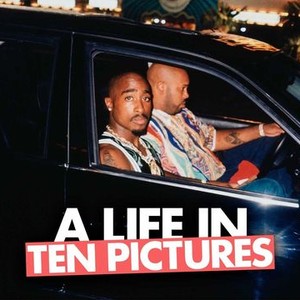 A Life in Ten Pictures by
A Life in Ten Pictures by Nas, byname of Nasir bin Olu Dara Jones, also called Nasty Nas, (born September 14, 1973, Brooklyn, New York, U.S.), American rapper and songwriter who became a dominant voice in 1990s East Coast hip-hop. Nas built a reputation as an expressive chronicler of inner-city street life.
Nasir Jones, the son of a jazz musician, grew up in public housing in Queens, New York. He dropped out of school in the eighth grade and searched for a creative outlet, finally settling on hip-hop. His breakthrough came in 1992, when his song “Half Time” (credited to Nasty Nas) appeared on the soundtrack to the film Zebrahead. Columbia Records soon signed him to a contract. His debut recording as Nas, Illmatic (1994), drew widespread acclaim for its poetic narration of hard-edged inner-city life. (5)
 Poetry in America : N.Y. State of Mind by Nas
by
Poetry in America : N.Y. State of Mind by Nas
by
 Life is Good
by
Life is Good
by
 Illmatic
Illmatic
Christopher Wallace, better known by his stage name The Notorious B.I.G., Biggie Smalls, or Biggie, was an American rapper of the 1990’s associated with East Coast Hip Hop. Wallace began rapping in his teens, entertaining on the street and with local groups like the Old Gold Brothers and the Techniques. In the early 90’s he signed with Uptown Records, making appearances in songs by Heavy D & the Boyz before moving to Bad Boy Records with its founder Sean “Puffy” Combs, also known as Diddy. It was at this time that Biggie became friends with Tupac Shakur. Their relationship would turn sour over the intensifying East-West feud, with a robbery that left Shakur with multiple gunshot wounds in 1994, and his signing with West Coast label Death Row Records. Following the shooting and death of Shakur in 1996, Wallace was suspected to be involved but claimed to be recording in New York at the time. Snoop Dogg has vouched for Biggie’s friendship with Shakur. In a 2020 interview with Fatman Scoop, Snoop Dogg recounted meeting Biggie in a New York hotel following Shakur’s death, saying “he’s sad that Tupac is dead, but I could look in his eyes and see that he hurt. He didn’t even have to say it, I could see it - that he hurt, behind Tupac being dead.”
Early in the morning on March 9th, 1997, Wallace was shot and killed in a drive-by shooting following an after-party following the 11th Annual Soul Train Music Awards in Los Angeles. At his death at age 24 Biggie had released two albums, 1994’s Ready to Die and 1997’s Life After Death, and would release multiple compilation and collaboration albums posthumously. Biggie is remembered by Rolling Stone for rapping “the facts of life, gangsta style, rendered by Biggie in that thick, jaunty grumble.” He was inducted into the Rock & Roll Hall of Fame in 2020.
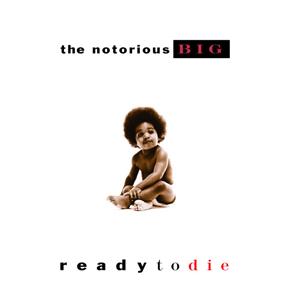 Ready to Die
by
Ready to Die
by
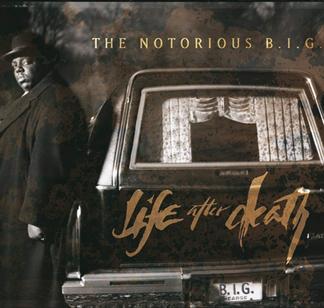 Life After Death
by
Life After Death
by
JAY-Z, previously spelled Jay-Z or Jay Z, original name Shawn Corey Carter, (b. 1969), American rapper and entrepreneur, one of the most influential figures in hip-hop in the 1990s and early 21st century.
Shawn Carter grew up in Brooklyn’s often dangerous Marcy Projects, where he was raised mainly by his mother. His firsthand experience with illicit drug dealing would inform his lyrics when he began rapping under the stage name Jazzy, soon shortened to Jay-Z (a name that may also have been derived from the proximity of the J and Z subway lines to the Marcy Projects). Jay-Z and two friends founded their own company, Roc-A-Fella Records, to release his debut album, Reasonable Doubt (1996), which eventually sold more than a million copies in the United States. (6)
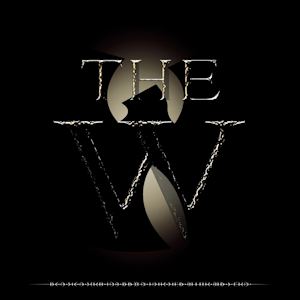 The W
by
The W
by
 Enter the Wu-Tang (36 Chambers)
by
Enter the Wu-Tang (36 Chambers)
by
The Music Library is hosting a battle of East Coast vs West Coast hip-hop artists. Each week during the month of February, you can vote on your favorite album. Listen to the albums by clicking the poll links!
 All Eyez On Me
by
All Eyez On Me
by
 Ready to Die
Ready to Die
The Music Library is hosting a battle of East Coast vs West Coast hip-hop artists. Each week during the month of February, you can vote on your favorite album. Listen to the albums by clicking the poll links!
 Illmatic
Illmatic
 The Chronic
The Chronic
The Music Library is hosting a battle of East Coast vs West Coast hip-hop artists. Each week during the month of February, you can vote on your favorite album. Listen to the albums by clicking the poll links!
 Doggystyle
Doggystyle
 Enter the Wu-Tang (36 Chambers)
Enter the Wu-Tang (36 Chambers)
The Music Library is hosting a battle of East Coast vs West Coast hip-hop artists. Each week during the month of February, you can vote on your favorite album. Listen to the albums by clicking the poll links!
 Eternal E
Eternal E
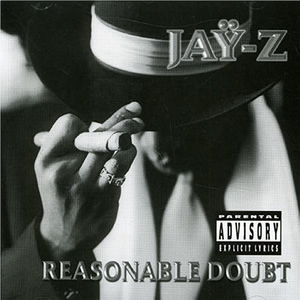 Reasonable Doubt
Reasonable Doubt
(1) Britannica Academic, s.v. "N.W.A," accessed January 27, 2022, https://academic.eb.com/levels/collegiate/article/NWA/630036.
(2) Britannica Academic, s.v. "Dr. Dre," accessed January 27, 2022, https://academic.eb.com/levels/collegiate/article/Dr-Dre/438807.
(3) Britannica Academic, s.v. "Ice Cube," accessed January 27, 2022, https://academic.eb.com/levels/collegiate/article/Ice-Cube/630054.
(4) Britannica Academic, s.v. "Snoop Dogg," accessed January 27, 2022, https://academic.eb.com/levels/collegiate/article/Snoop-Dogg/438818.
(5) Britannica Academic, s.v. "Nas," accessed January 27, 2022, https://academic.eb.com/levels/collegiate/article/Nas/438815.
(6) Britannica Academic, s.v. "JAY-Z," accessed January 27, 2022, https://academic.eb.com/levels/collegiate/article/JAY-Z/438811.